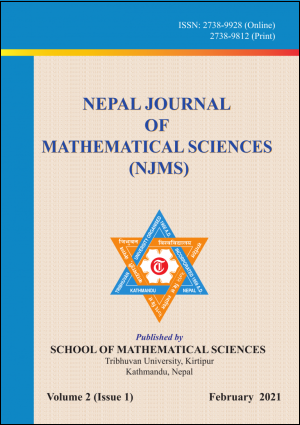Dynamical Indicator of Human Body’s Physical Endurance
DOI:
https://doi.org/10.3126/njmathsci.v2i1.36561Keywords:
Physical Endurance, Fast Lyapunov Indicators (FLIs), Dynamic Lyapunov Indicators (DLIs), Small Alignment Indexes (SALIs), Lyapunov Characteristics Exponents (LCEs)Abstract
Physical endurance is the time span between the beginning of physical activity by an individual and the termination because of exhaustion. Physical endurance involves a multifaceted behaviour which can be understood by complexities. Everyone performs physical activity in order to sustain-life. However, the number of activities done are largely subject to personal choice and varies from person to person as well as for a given person over time. Physical activity like meditation/exercises are positively related to physical fitness. One needs to understand relation between physical activity, exercise, physical fitness and health. These activities can be partitioned mutually exclusively into many different ways. This paper categorizes daily physical activity into three broad subdivisions based on amount of body movements taking place are: (i) light, (ii) moderate and (iii) high intensity. These three characterizations are considered to be mutually exclusive and sum up to total energy spent by an individual. The behavior of the three factors physical activity, heart and energy generated is analyzed with the help of Fast Lyapunov indicator (FLI), Dynamic Lyapunov indicator (DLI), Small alignment index (SALI). FLI’s increase for chaotic orbits for values of R=20, Q=70 for the case of high intensity exercises and to linearly regular orbits for values of R=5, Q=8 and R=10, Q=12 in the cases of light and moderate exercises respectively. SALI’s alters through non-zero value for R=20, Q=70 while it tends to zero for values of R=5, Q=8 and R=10, Q=12. DLI’s the largest Eigen values form a definite pattern/curve for n=2000 for values of R=5, Q=8 and n=100 for R=10, Q=12 respectively as the motion stays regular plus dispersed randomly as the motion is chaotic for n=60 and for R=20, Q=70.
Downloads
Downloads
Published
How to Cite
Issue
Section
License
© School of Mathematical Sciences, Tribhuvan University

